11 Best Things To Do On Cumberland Island, Georgia's Gorgeous Natural Gem
This barrier island is a sanctuary to behold, including historic ruins and wild horses.
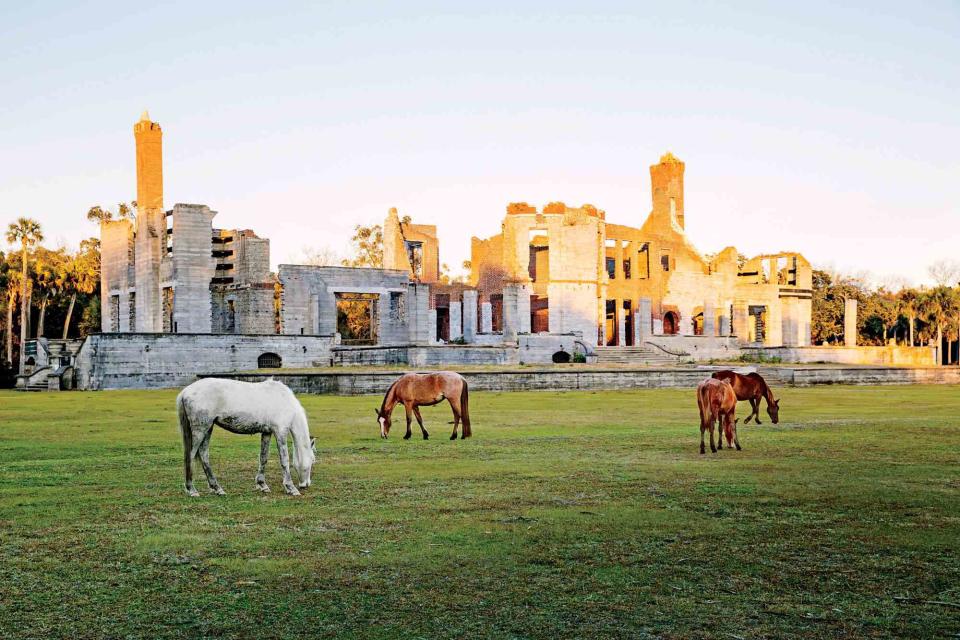
Steeped in history and seemingly suspended in time, this enchanting Georgia barrier island offers visitors an immersion into another time. Far from the sounds and demands of the modern world, Cumberland Island is a retreat to a slower pace of life.
Today, Cumberland Island is mostly protected land under the classification of National Seashore. The 17-mile-long strip of land remains largely in its natural state, populated by dense maritime forest of live oaks, saw palmetto, sabal palms, and pines. Marshland merges into wide sandy beaches. You’ll see wild turkeys roam, as well as another animal that is not native to the island but has given Cumberland its romantic reputation: horses. Brought to the island by its early residents and now left to roam wild as the need for their domesticated work disappeared, it’s estimated there are well over 150 wild horses on the Cumberland island. No matter where you are, you’ll likely hear the creatures whinney and neigh as they roam around their coastal home. Important to remember: As elegant as they are, do not approach or try and pet the horses.
Here's what to know about Cumberland Island, and what to do once you get there.
Where is Cumberland Island?
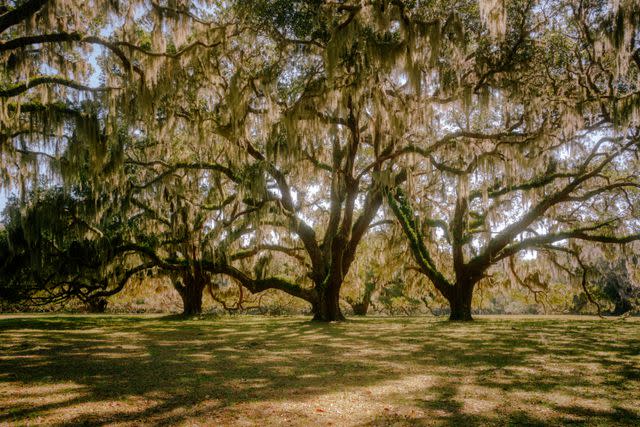
Kelsey Glennon
You’ll find this golden isle off the coast of the Georgia-Florida state line. It is only accessible by water—on a ferry or private boat, or by private plane.
Its landscape consists of marsh, ancient live oak maritime forest, and, of course, beaches. The shores are white sand dotted with shells, driftwood, and the hooves of wild horses. The best time to visit is between October and June. The summer months can be buggy, humid, and hot, so if you do visit during this time, come prepared with plenty of provisions.
Related: The Best Things To Do on St. Simons Island, Georgia
Cumberland Island History
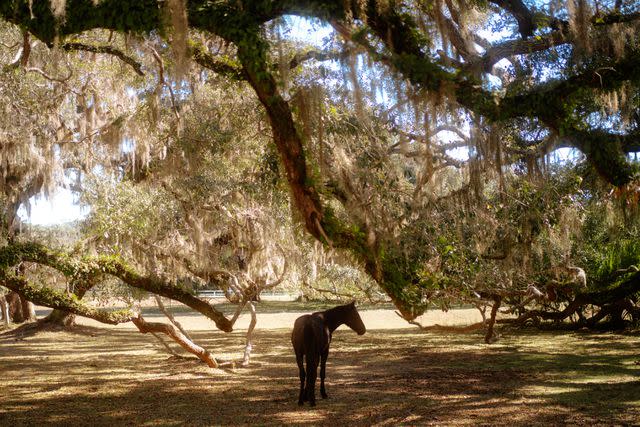
Kelsey Glennon
Cumberland Island’s first residents were the Timucuan Native Americans. Spanish and English explorers arrived in the 1500s. By the late 1886, most of the island had been acquired by Lucy Coleman Carnegie, wife of Thomas Carnegie, co-founder of the iron and steel conglomerate Carnegie Brothers & Company. Lucy brought luxury to the island in the form of estates, family mansions, and a power plant.
Today, Cumberland Island is mostly protected land under the classification of National Seashore, with the exception of some remaining private land still owned by the Carnegies, Candlers (of Coca-Cola), and several other private owners. The island was almost developed in 1972, but the island’s residents banded together with environmental organizations and the Department of the Interior to protect the wild island, donating most of their land to the public. Its classification as a National Seashore protects it from development in perpetuity.
Tips for Getting There
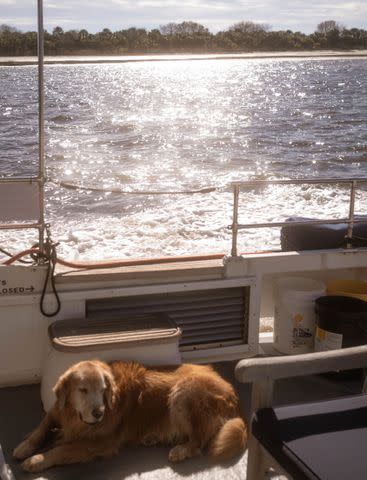
Kelsey Glennon
All visitors to Cumberland Island must register with the National Park as there are only 300 visitors allowed per day. There are no car bridges to Cumberland Island. The only way to get to the island as a public visitor is by a 45-minute ferry ride.
There are several fees involved in visiting the island:
A Cumberland Island Ferry ticket, which departs from St. Marys, Georgia.
A bike fee, if you bring one to get around the island faster.
A camping fee, If you wish to stay on the island overnight.
Use this Cumberland Island visitor’s checklist from the National Park Service to ensure you are prepared for your trip with the right supplies and registration.
Best Things To Do
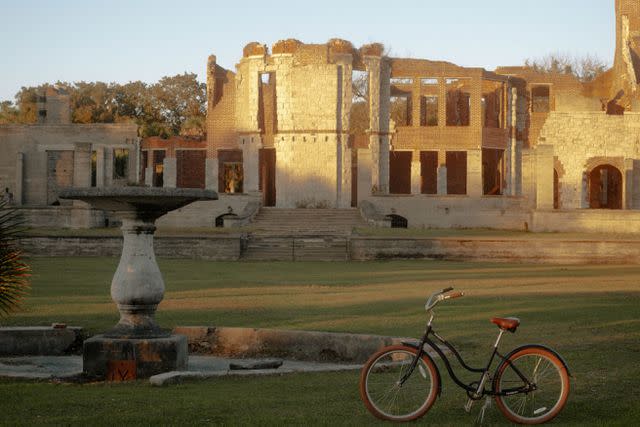
Kelsey Glennon
Take a Rugged Overland Tour
The island is rich with history, settlements, and significant buildings, which can be hard to hit all in one day. However, the Lands & Legacies 6-hour overland tour takes you to the highlights of Cumberland Island’s North Shore, and is booked through the same platform as your ferry ticket. This is the only public motorized tour offered of the island.
Take a Walking Tour
Cumberland Island is 17 miles long, so it is not advised to try and explore the entire island on foot as a day visitor. But, you can take a 4.3-mile hike called the South End Loop Trail. For extra guidance and narration, this private walking tour covers some of the main attractions on foot and works around the ferry schedules so day visitors can make the most of their time.
Roam the Dungeness Ruins
Perhaps Cumberland’s most majestic attraction, the Dungeness ruins are what is left of Lucy Carnegie’s estate she built for her family in 1884. The 35,000-square-foot mansion burned in 1959, but you can still envision the grandeur of this Gilded Age vacation home from the brick and stone bones of the ruins that remain.
Go Beachcombing on Cumberland Island Beach
Cumberland’s history and ruins are fascinating, but its natural beauty is breathtaking. Take a slow walk on the wide beaches at low tide. Look for shells and enjoy having the beach to yourself, save for a few wild horses in the distance.
Marvel at the Plum Orchard Mansion
Plum Orchard is a Georgian Revival mansion framed by massive, ancient live oaks. The family home was commissioned by Lucy Carnegie for her son George and his wife Margaret. Unlike Dungeness, Plum Orchard still stands and underwent extensive renovations in the early 2000s to save it from ruin. Today, the mansion is maintained by the National Park system, and docent tours are run during its active season. Check first at the ranger station to ensure tours are running to avoid a 15-mile trip from the ferry docks.
Learn About the Gullah Geechee Culture
Historically, Africans who worked on isolated coastal communities along the Carolina, Georgia, and Florida coast brought along their African traditions and heritage through arts, crafts, and music (influencing American culture today). This specific diaspora became known as the Gullah Geechee. After emancipation, many of the former enslaved peoples remained and lived off the land they had come to know so well. The Gullah Geechee community established The Settlement at the north end of Cumberland Island. It was the first privately owned community of former enslaved peoples after the Civil War. Today you can visit and walk through the last standing home of the community. You can also go inside the First African Baptist Church—often noted as the location of John F. Kennedy Jr.’s 1996 marriage to Carolyn Bessette in a clandestine ceremony far from the eyes of the press.
Remember, the north end of the island is a 30-mile round trip journey from the docks of the public ferry. The best way to see the settlement as a day visitor is part of the Land’s & Legacies Tour by overland van.
Related: The Hisotry of Gullah-Geechee Cuisine in Charleston, South Carolina
Cruise around Cumberland Sound
Though not technically on Cumberland Island, sailing the sound is a great way to enjoy the beauty of this untouched coastal region. Book a sunset cruise with Follow That Dream charters to enjoy an evening out on a comfortable catamaran, complete with snacks and drinks. Sail past Amelia Island and along the horse-filled shores of Cumberland while the sun sinks below the horizon.
Wear a Piece of Cumberland Island
A remote barrier island might be the last place you’d go to purchase fine jewelry, but on the Greyfield Inn estate is a home and studio inhabited by Gogo Ferguson, a family descendent of the Carnegies and a well-known artisan. There, she makes and sells Gogo Jewelry, which is made from found flora and fossils on the island.
Where To Stay
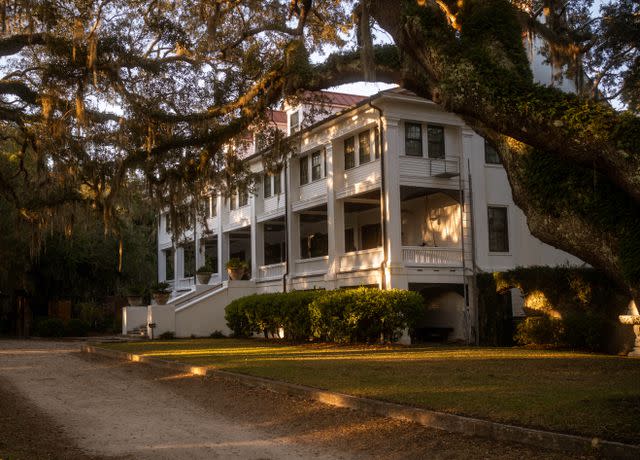
Kelsey Glennon
Camp on Cumberland Island
Rugged adventurers who wish to extend their exploration of the island can book nights camping on the island. Pitch your tent at one of the island's designated campsites and fall asleep to the soothing sounds of horses and nature all around you. Wake up to another day traversing the large island or just enjoying your campsite by the beach. If camping overnight, you must make a reservation with the National Park Service, and can do so up to six months in advance. Follow their camping requirements for visiting Cumberland Island.
Indulge in an Overnight Stay at the Greyfield Inn
For a completely different overnight experience to camping, indulge in a luxurious stay at the Greyfield Inn. The Inn is another private Carnegie family home, this one built in 1900 for Thomas and Lucy’s daughter, Margaret. Today, it is immaculately maintained by the family and on-island staff. The Inn’s large veranda is the epitome of Southern leisure. Inside, a library and living room invite guests to sit and play a game of chess or rest by a large crackling fire. A guest stay is all-inclusive and includes drinks and all meals (much of which comes from the onsite garden), including a picnic lunch you can take where you wish on the Inn’s complimentary bicycles. The Inn is open year-round save for the month of August when it closes during the island’s hottest month.
For more Southern Living news, make sure to sign up for our newsletter!
Read the original article on Southern Living.

